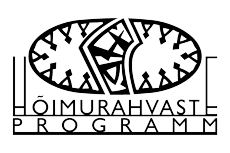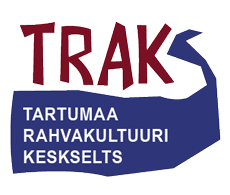Tulkaa, tüttäred, tulõllõ
(Bonfire Song)
Anna Kivisoo and choir (archive recording)
Kati Soon and choir
In Votian
Tulkaa, tüttäred, tulõllõ,
vanad naizõd, valkõallõ!
Tuli on tehtü tüttärille,
laikka lahsailõ lavottu.
Tuli on tehtü tuulõõ pääle,
laikka õtsallõ lavottu.
Tüttäred, sõzeüeni,
sõbrani, emäni lahzõd,
la-ka kukun kuu valulla,
la-ka vilisän vilulla,
kajahtutan kassõ’õlla!
Se kuulub kumu kotoosõ,
ääli äühtšäb ennelleni.
Tšülä tääb kurjõd kukkuvahsi,
lidnaa linnud laulavahsi.
Tunnõb enne äälessäni,
kumõassa kurkussani.
Enne vasso vassaõlõb:
“Eväd ned kuku tšülää kurgõd,
eväd laula lidnaa linnud!
se kukub kuvattusõni,
ilotsõb imetettüni.”
In English
Come, girls, to the bonfire,
Old women to the light!
The fire was made for the girls,
Flames stacked for the children.
The fire was made on the wind,
Flames stacked on the [village] end.
Girls, my dear sisters,
My friends, my mother’s children.
Let [me] call in the moonlight,
Let me whistle in the shadows,
Echo in the dew!
The sound travels home,
The voice reaches the mother.
The village knows that cranes call,
The town birds sing.
My mother knows [me] by voice,
By my resounding throat.
Mother replies:
“It’s not the village cranes that call
Nor the town birds that sing!
She crows to whom I gave birth,
She rejoices, whom I breastfed.”
Singing maidens invite each other and all the villagers to the bonfire at the edge of the village. Then follows a poetic image about maidens whose beautiful singing is heard as the singing of birds—only the mother knows that it is not birds who are singing but her daughter. At the bonfire, and while walking on the village streets and on the swing, the songs have lasted over a long time and the songs combine many lyrical motifs on suitable themes.
Ritual bonfires were lit on many summer feast days in Ingria. The great nineteenth-century singer Anna Ivanovna has said that this call to bonfire was given on troitsa, Pentecost.
As a moveable feast, Pentecost was celebrated in May or June. On the day before Whitsunday, the graves of dead relatives were visited and pies and other festive dishes were prepared for ritual consumption at the grave. At home, the yard was wiped clean and decorated with birch trees from the forest. Girls went to the forest to pick plants that could be used to dye eggs. The Pentecost eggs were mostly dyed yellow, or, according to some reports, red. The girls gave the eggs to young men for taking down the village swing after Pentecost, as after this time there was usually no swinging. Eggs were also given to herders. The day ended with lighting a bonfire.
In some villages, people lit bonfires on Saturday and Sunday evenings from St. George’s Day to Whitsunday. They danced and sang around the bonfire all through the night. Girls stroke fire with a twig three times and recited: “Weeds into fire, flax to the field!“ The twig was then thrown into fire. Motifs of spells can be found also in songs inviting people to the bonfire: he who won’t come to the evening bonfire, will have his flax rotten or his son will become a poor clay burner.
T Anna Ivanovna, Peen-Rudja (August Ahlqvist 1854–1855, SKVR IV3 4652).
M Anna Kivisoo, Ropsu, and choir (Lauri and Aili Laiho-Simonsuuri 1937, ERA, Pl 114 A1).
A Anna Kivisoo and choir (Lauri and Aili Laiho-Simonsuuri 1937, ERA, Pl 114 A1).





